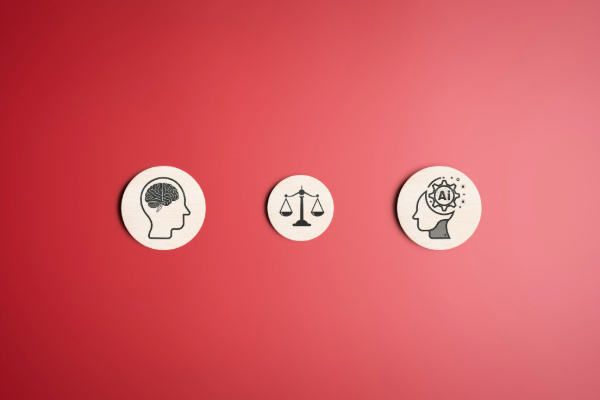Insights
INSIGHTS
All Topics
How to make your social media a trusted voice
14 Oct 2024by Laura Stanley
We explore how charities can make the most out of their social media accounts, helping them to reach more people and make them a successful extension of their online presence
Social media has gone from being the hip new digital tool on the block to a tried-and-tested essential in any organisation’s communications arsenal. Social media has helped countless charities reach more people, raise awareness of their cause, launch fundraising campaigns, and drive donations.
However, the world of social media does not stay still for long. New platforms emerge, existing platforms change, and charities have to respond in kind. Facebook has ceased using its dedicated fundraising tools in Europe, for example, while X (formerly Twitter) has undergone myriad changes since its takeover by Elon Musk in 2022, with users reporting less engagement and less functionality on the platform.
Social media accounts are not useful if they are not achieving their aims. If your audience is no longer on a certain platform, organisations must move with them to reach them where they are present and engaged. Many charities have been able to not only reach existing audiences using social media, but connect with new ones on newer platforms such as TikTok too.
Social media is primarily a communication tool. While research has shown that 62% of people have low trust in information they hear about a charity on social media, information they hear from a charity themselves on social media is trusted far more. It is incredibly important for charities to repay that trust, delivering up-to-date, accurate communication about their cause, reaching audiences in a place where they are open to receiving it.
In order to gauge the success of this endeavour, charities should consider completing a social media audit. A social media audit can help protect the reputation of a charity by ensuring that your social media usage is fit for purpose, sharing clear communications that bring audiences closer to your mission.
Below, we explore some of the key considerations to factor into a social media audit, from content to branding. You can find out more about conducting a social media audit by visiting the Global Cyber Alliance Toolkit and using this helpful template from Hootsuite.
How to conduct a social media audit
Monitor your accounts
The first step of a social media audit is to list the social media platforms you currently use, including those that are inactive. Even those that are not used regularly still contribute to your online presence (and can be a potential risk to it if long-term inactivity is assumed to reflect the state of your current operations).
Searching every major platform for your charity name (including individual services, if you have them) will help you find ones that may have been set up in the past or identify social media accounts using your name that are not affiliated with you. Again, this contributes negatively to your online presence so it’s good to be aware of their existence so you can prevent them from misleading your audiences. Once again, charities are a trusted presence even on social media and bad actors have been known to use this to their advantage, posting misinformation or asking for money fraudulently.
To find out more about which social media platforms best work for you and your audience, check out this helpful article from the .ORG Learning Center.
Check your branding
Branding is your charity’s shortcut to help donors, beneficiaries, and the general public identify you and verify your identity. It is important to ensure that your social media accounts, even the inactive ones, reflect your current branding, fit in with your guidelines, and generally look like they belong to you in order to be deemed trustworthy by other social media users. This includes looking at your display image and making sure it’s in the correct resolution and size, as well as updating your bio and any links to ensure they still go to the right place.
Charities can also look into verification on each of their platforms (though the process differs for each of them) to act as an additional marker of security for their supporters.
Audit your content
Part of your social media audit should include what you share there. This defines the purpose and success of your social media usage. For example, are people engaging with your news articles posting on a specific platform as opposed to another? Are more people watching videos than reading blogs? Are written posts leading more people to your site or are shareable, informational image-based carousels driving donations?
This is the type of information charities need to know to make sure they are using social media effectively. Look at your top performing posts and determine what made them work so you can replicate this success in the future. You can used analytics tools that are built into each of your platforms to examine what’s working or find a way to bring all that data together in one place giving you a bigger picture of your social media presence.
Analysing the performance of your content can be assisted by predictive artificial intelligence (AI) tools, which is able to spot patterns much more quickly. It can help you find the best times to post, which types of post drive the most engagement, and which channels work best for different types of content. Analysing this data manually can be time-consuming while predictive AI removes some of that burden.
At this stage, it is also worth being aware of the proliferation of online content created by generative AI. While AI can be helpful in generating short-form posts, charities should always apply human insight to ensure what it being communicated is accurate. Similarly, when reposting content, they should be sure of the veracity of the images and content they are sharing.
Overall, use of AI-generated content, particularly images, can undermine trust in your messages, as well as risking accusations of plagiarism since AI tools pull from a variety of existing content sources. If your charity has a number of social media accounts managed by different people, they should consider creating an AI use policy to ensure that AI content is used and shared appropriately, prioritising quality and accuracy.
Find out more
Find out more about conducting a social media audit by clicking above to visit the Global Cyber Alliance Toolkit
Laura Stanley
More on this topic
Recommended Products
27 Jan 2025by Laura Stanley
Charity Digital Exchange: Grow your charity with AWS
24 Jan 2025by Joe Lepper
The charities tackling prison overcrowding
Our Events
Charity Digital Academy
Our courses aim, in just three hours, to enhance soft skills and hard skills, boost your knowledge of finance and artificial intelligence, and supercharge your digital capabilities. Check out some of the incredible options by clicking here.


















